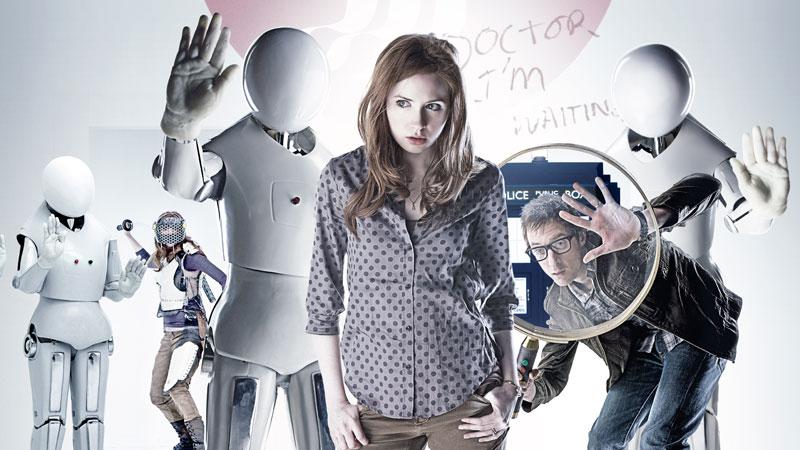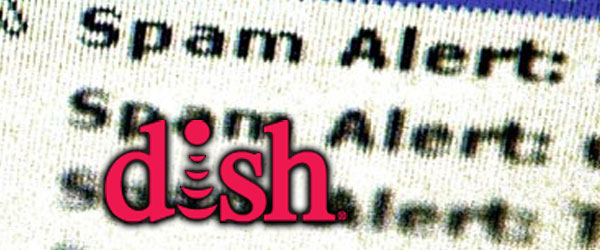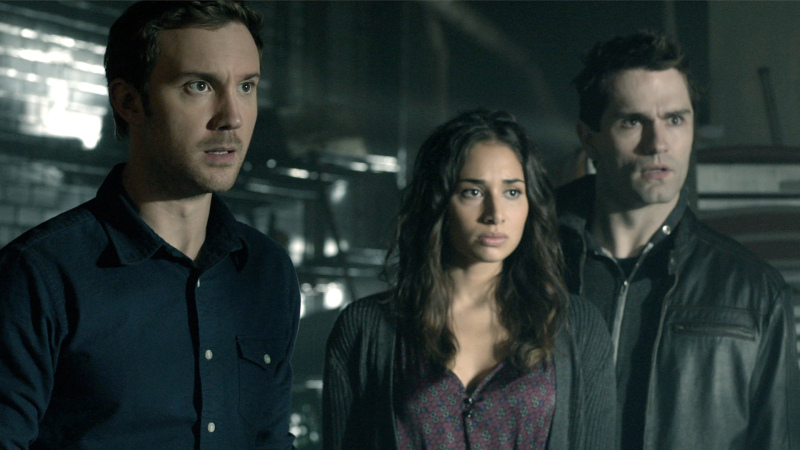A Sci Fi Reader's Starter Kit

Editor’s Note: Blaise Lapinski, whom you may know due to his recent articles on rail guns and gravity, is a dear friend. We’ve bonded over shared work experiences and a love of spirits, cooking, and of course, sci fi. Blaise is an old school sci fi fan, and for a while, I’ve nagged him to provide a list of what, in his view, are the best sci fi books. When last I checked on his progress, he screwed his face up a bit, scratched his beard and said: “Yeah…about that. It’s kinda hard. I want to try to provide some direction but allow you to make your own decisions on what is good. Maybe I should give you a kit instead.” Below, you’ll find a condensed version of what followed…a science fiction reader’s starter kit, which I now share with you. Pay it forward, friends. – Leslie
____________________
I have been reading sci fi almost exclusively since I was young. The books I’ve read were based on suggestions from friends, book jackets with intriguing notes, or interesting cover art. The suggestions I make are about the books that I like personally.
I shy from some of the mainstream series such as Dune. I enjoyed Dune, but never got through the second book, and I found Frank Herbert’s other works to be superior. I’ll probably catch flak for that, but read Destination Void and the series that follows, and tell me I’m wrong. Remember that authors have to eat, so continuing a series is often an economic rather than an artistic decision. Further, I found with series that I waited too long for the next book in the series, or worse, read the next book and wished it all would just end.
A couple of examples: Robert Jordan’s Wheel of Time and L. Ron Hubbard’s Mission Earth. Maybe I’m jaded by them, since both authors passed away before completing the series. Jordan had too many sub-heroes above the Rosencrantz/Guildenstern threshold, and he seemed compelled to complete all their stories; George R.R. Martin has this issue too, but he resolves it by killing characters when they get too interesting. And L. Ron Hubbard’s issue? Let’s just say he was L. Ron Hubbard, and leave it at that.
If we’re avoiding series, where to begin instead? Perhaps at the beginning? In 1975, I read every Tom Swift book the library had; you can now get the whole collection for the Kindle for $1.99.

From there, Isaac Asimov, Ray Bradbury and Robert A. Heinlein. With Asimov, I found his hard science writing to be far superior to his fiction, although did read I, Robot and would recommend it. In my younger days, I also read the Lucky Starr series published under the pseudonym of Paul French, yet I only have vague memories of these books. Asimov’s Nightfall, critically acclaimed as the most famous science fiction story ever written, is another one I’m pretty sure I’ve read but don’t recall. The absence of lasting impressions is probably why I discount Asimov’s work.
Bradbury is another big author in my collection. Along with many short stories, some of the books that come immediately to mind are Fahrenheit 451, The Martian Chronicles and Something Wicked This Way Comes. While the latter isn’t sci fi, it was a favorite as I was growing up.

And then there’s Heinlein. I see his work falling into three categories. In the first category are works for the young reader, with notable titles such as: Podkayne of Mars, Space Cadet, and Tunnel in the Sky. Second are his mainstream works: Stranger in a Strange Land, The Moon is a Harsh Mistress (first sci-fi novel that I ever purchased), Starship Troopers, and a multitude of short novels and short stories all worth considering. In the 70s, Robert slowed down and only produced two books, I Will Fear No Evil and Time Enough for Love, which at the time seemed to take a different (i.e, hyper-sexualized) track from everything else he had written. If you read just one Heinlein work, read Stranger in a Strange Land. Robert A. Heinlein is arguably one of the giants in the genre and, for me in my early days, if I saw a book with his name on it with an unrecognized title, it immediately went into my collection.
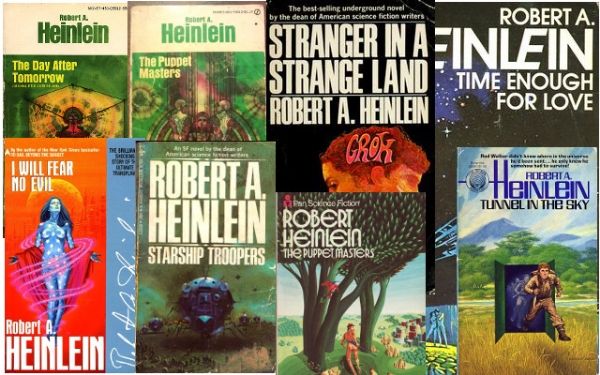
Next up, Arthur C. Clarke. The first of his books that I read was A Fall of Moondust, which was like a 70’s disaster airport movie on the moon (for you young’uns: in the 70’s, there were a string of airport movies with star-studded casts, in which really bad things happened on airplanes, making the general public too scared to consider boarding these deathtraps. Arthur wrote the novel in 1961, so perhaps they stole some of his thoughts, especially in Airport ’77). Following that was Rendezvous with Rama, which is an all-time classic and Hugo award winner; this is one book that I have read multiple times, it is that good.
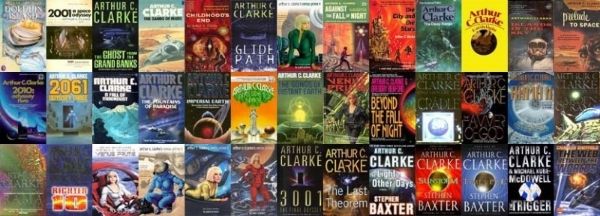
When you discuss Arthur, you have to mention 2001: A Space Odyssey. I actually read the book before I saw the movie, which was a masterpiece of sci fi at that time. Today, many people would likely find the movie tedious, because unlike most modern sci fi movies, it accurately portrayed the silence and isolation of deep space travel. On a side note, I recall a discussion with a fellow fan several years ago about the movies of Stanley Kubrick; my friend contrasted this film and A Clockwork Orange, pointing out the first is about machines becoming human, and the other about humans becoming machines. Other great Clarke works include The City and The Stars (another I’ve read more than once), The Hammer of God, and Childhood’s End.
Before moving on, I should mention other authors from the “Golden Age of Science Fiction”: Poul Anderson, Alfred Bester, James Blish, Nelson S. Bond, Leigh Brackett, Bertram Chandler, John Christopher, Hal Clement, L. Sprague de Camp, Lester del Rey, Philip K. Dick, C. M. Kornbluth, Henry Kuttner, Fritz Leiber, Walter M. Miller, Jr., C. L. Moore, Chad Oliver, Frederik Pohl, Ross Rocklynne, Eric Frank Russell, Clifford D. Simak, E. E. “Doc” Smith, Theodore Sturgeon, William Tenn, A. E. van Vogt, Jack Vance, John Wyndham, Fredrick Brown (if you can find Martians, Go Home from Brown, you’re in!). I’ve read something from each of these authors, and it’s all good.
When I got to high school, I discovered Larry Niven. The first book of his that I read, a collaboration with Jerry Pournelle, was Lucifer’s Hammer. It was suggested by a student teacher in a creative writing class; she was hot, that might have had something to do with why I read it. Larry has a mathematics background, and he brings that knowledge into his books. He also builds universes in which multiple but not necessarily connected books live. Ringworld (read it probably five times) was a book in which an artificial world was built as a ring around a star that the Earth would roll around in as a marble. Larry followed up with three more books beyond this and another recent series with Edward M. Lerner; both series dig into the history leading up to Ringworld. Friggin’ awesome!
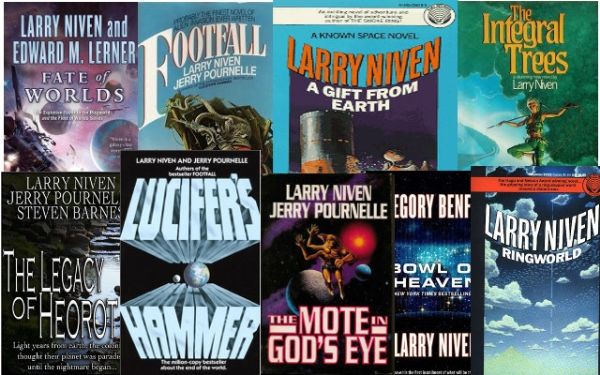
Next is The Integral Trees and The Smoke Ring. These books stemmed from the discovery that that Io, a moon of Jupiter, orbits within a gas torus (i.e., a stable tube of gas that circles the planet, its atmosphere is not a sphere that surrounds it). Larry extended this concept into a habitable gas torus, which involved a gas giant (like Jupiter) orbiting a neutron star, both orbiting a star which functions as a light source to make it all habitable. How did humans got there? Read the books. His other achievements are A Gift from Earth (read it, read it again, and read it again), and A World Out of Time (read it, read it again, read it again; I’m going to read it again…detect a pattern?).
Now let’s look at Larry Niven and Jerry Pournelle. I mentioned Lucifer’s Hammer; it’s an exploration of the social response to the discovery that a large comet is about to impact Earth and destroy most of the world’s infrastructure. Covering similar ground is Footfall, where the destruction of Earth’s infrastructure is due to alien invasion. And then there’s The Mote in God’s Eye, which is probably one of the top alien first encounter ever written (plus two sequels worth reading, but not quite the same quality).
A collaboration between Larry Niven, Jerry Pournelle and Steven Barnes led to The Legacy of Heorot, a sci fi-horror page-turner that makes Alien seem like a children’s story. Read this book (and perhaps the sequel Beowulf’s Children), and then try to convince me that this isn’t one of the best in the genre.
Larry and Steven also did some great collaboration; their Dream Park books are fun, and Achilles’ Choice and Saturn’s Race are top-notch. You might be starting to realize that I think Larry Niven is one of the best. I have read all of his works, and he’s still working (with Gregory Benford, who wrote Timescape; Benford is a master of time conundrums). I should also note that Jerry Pournelle and Steven Barnes have many books by themselves that are worthwhile. Then there’s John Barnes, whom I once picked up thinking he was Steven Barnes; I won’t go into his work here, except for Mother of Storms…read it, and maybe you’ll understand why.
Another big author from my high school days is Samuel R. Delany. At the time I was taking a science fiction literature class. The teacher, concerned about a blurb on the back of the book that mentioned sexual relations and drug experiences, asked me to read Samuel’s Nova to determine if it was appropriate for a high school library. Sheesh, I’d been reading Heinlein, and this didn’t even come close, so I approved and it went onto the shelves. However, don’t let your kids read Dhalgren until they are at least 18. Samuel is a gay African-American, but that didn’t prevent him from winning two Nebula awards in the 60’s. I’ve read everything he’s written. Of his work, I’d also recommend The Einstein Intersection, Babel-17 and The Fall of the Towers, but this doesn’t even come close to touching all of his work.

So many more authors from this era: Andre Norton, C.J Cherryh, Allan Dean Foster (the Flinx series are great for young readers), Phillip Jose Farmer, Ben Bova, Ron Goulart (I’m convinced that Douglas Adams mimicked his style from Ron; I’ll grab any Ron Goulart that I see on the book shelf, even if it’s wrapped in plastic and over-priced), John Varley (read the Titan series, you won’t be disappointed). And then there’s James P. Hogan, and Anne McCaffrey (Dragon Riders are fun, but do yourself a favor and read Crystal Singer), and Ursula K. LeGuin (The Dispossessed). Some more obscure works fit in here, as well. T.J. Bass only wrote two sci fi novels, Half Past Human and The Godwhale. T.J. was a biologist, and these two books are filled with biological aspects of cybernetics in futuristic worlds, just awesome stuff.
You can explore this era at your used bookstore. Look for the mustard yellow spines with the Daw books logo in the sci fi section. You can’t miss with Daw, now owned by Penguin books. In their time, they sought out the best, and many of their authors would never have been published without their support.

In the more modern era: Iain M. Banks. I consider his books to be the best that I have ever read. Use of Weapons, The Player of Games, Consider Phlebas, Excession to name a few, and this doesn’t include his regular fiction titles published under Iain Banks. It was a great loss when Iain passed away.

That covers most of my favorite sci fi authors. Unfortunately, this was supposed to be a starter kit. Perhaps an intermediate and advanced kit are in order…
![]()


